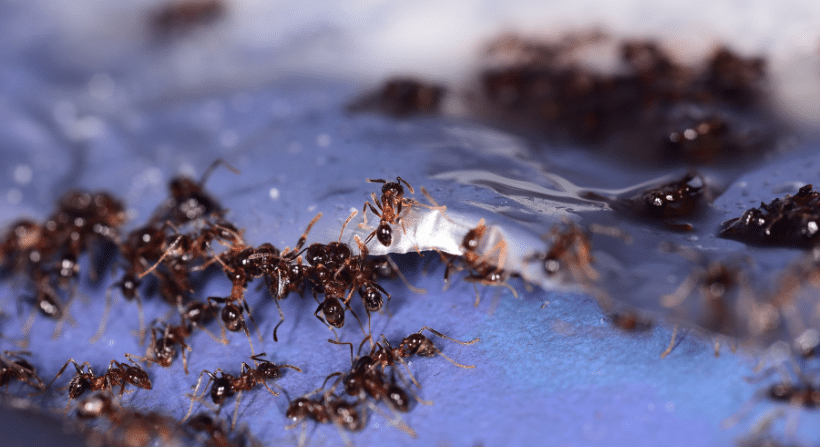Ant baits are a popular and effective method for controlling ant infestations in homes and businesses. These small, discreet traps contain a mixture of food and insecticide that attracts ants and ultimately eliminates the entire colony. But how exactly do ant baits work, and why are they so effective? In this blog, we’ll delve into the science behind ant baits, exploring their mechanism of action and why they’re a preferred choice for ant control.

Understanding how ant baits work is essential for effectively managing ant infestations and maintaining a pest-free environment.
How do Ant baits work?
- Attractant: Ant baits contain a mixture of food ingredients that are attractive to ants. These can include sugars, oils, proteins, or other substances that appeal to the particular species of ants being targeted.
- Active Ingredient: Mixed within the bait is a small amount of insecticide, usually in a slow-acting form. Common active ingredients include boric acid, abamectin, fipronil, or hydramethylnon. These insecticides are chosen for their effectiveness against ants while being relatively safe for use around humans and pets when used according to the label instructions.
- Foraging: When ants discover the bait, they are attracted to the food source and carry it back to the nest. Ants are social insects that live in colonies, with different ants having specific roles such as foraging, caring for the young, or protecting the nest.
- Feeding the Colony: The foraging ants bring the bait back to the colony, where they share it with other ants through a process called trophallaxis, in which they exchange food and fluids. This results in the distribution of the bait throughout the colony.
- Slow-Acting Insecticide: As ants consume the bait, they ingest the insecticide along with the food. The insecticide is formulated to have a delayed effect, allowing the ants to return to the colony before succumbing to its effects.
- Impact on the Colony: Over time, as more ants consume the bait and carry it back to the nest, the insecticide gradually affects the entire colony, including the queen and larvae. This disruption to the colony’s population and functioning ultimately leads to its collapse.
- Elimination: With the gradual depletion of the colony’s population, the ant infestation is brought under control. It’s important to note that while baits are effective, they may require patience as it can take several days or weeks to see significant results, especially with larger or more established ant colonies.
Overall, ant baits are a targeted and relatively low-toxicity method of ant control, providing long-term relief from infestations by targeting the entire colony rather than just individual ants.
Read Also: Bed Bugs: Stress and Sleep Deprivation
Conclusion
In conclusion, ant baits offer a highly effective solution for controlling ant infestations by targeting the entire colony. Through a combination of attractive food sources and slow-acting insecticides, ant baits lure ants into consuming the bait and bringing it back to the colony, where it spreads and ultimately eliminates the entire population. This targeted approach not only provides long-term relief from ant problems but also minimizes the need for repeated applications of insecticides in the environment. By understanding the science behind ant baits and their mechanism of action, homeowners and pest control professionals can confidently rely on this method to effectively manage ant infestations and maintain a pest-free environment.
If you’re dealing with an ant infestation and need professional assistance, contact Tulsa Bed Bug Exterminator today. Our expert team specializes in pest control solutions tailored to your needs. Schedule a consultation now and take the first step towards a pest-free home or business.

Recent Comments